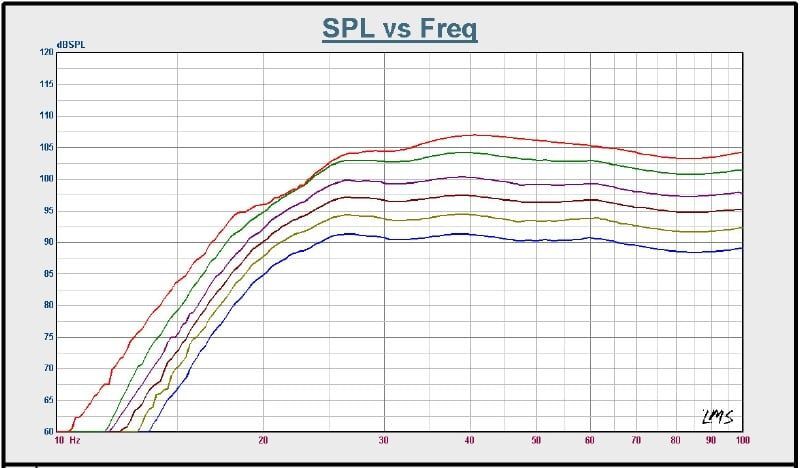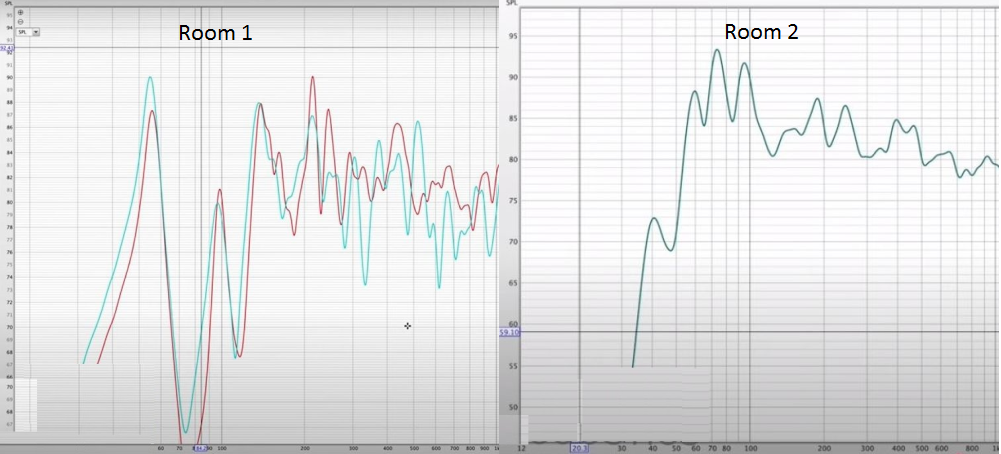
Woofers have by far the worst in room performance compared to any other part of the audio component chain. The errors include frequency response, decay time, and distortion errors. No other component in the audio change would be accepted if they performed as poorly as a woofer in a typical home audio room.
A multiple subwoofer strategy can make a noticeable improvement in the frequency response flatness, but cannot adjust the decay times or amount of low frequency absorption for the listening room.
Digital room correction, (DRC) can smooth out the peaks in room bass responses, but cannot solve the dips from room nodes.
Room treatment will help with decay times, however they cannot do much to help smooth bass response. At bass frequencies room treatments need to be very thick.
The Thigpen waveguide woofer solves all three errors plus the biggest prob;lem of all, the size and ideal location problem.
Here are some real world examples of the existing problem
The nearfield frequency response of your speakers woofer or outdoor woofer ground plane measurement will likely look very good:

You purchase a speaker system or sub woofer with very nice outdoor or anechoic performance
The near field frequency response of your speakers woofer or outdoor ground plane measurement will likely look very good:
However, once placed in a room, the response starts to look like these graphs below. The upper left graph shows before and after adding bass
traps which do perform well at midrange and high frequencies, but actually don't work very well at low frequencies.

